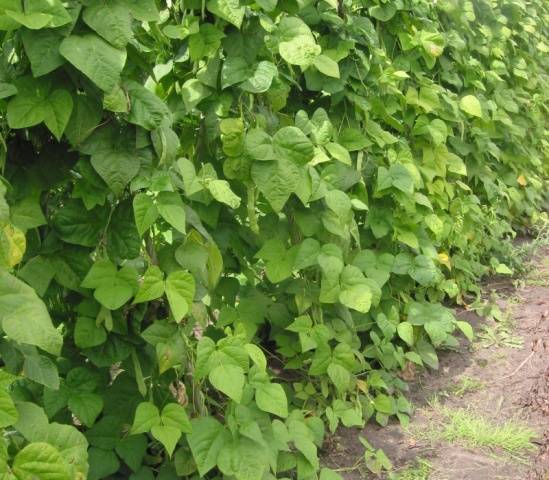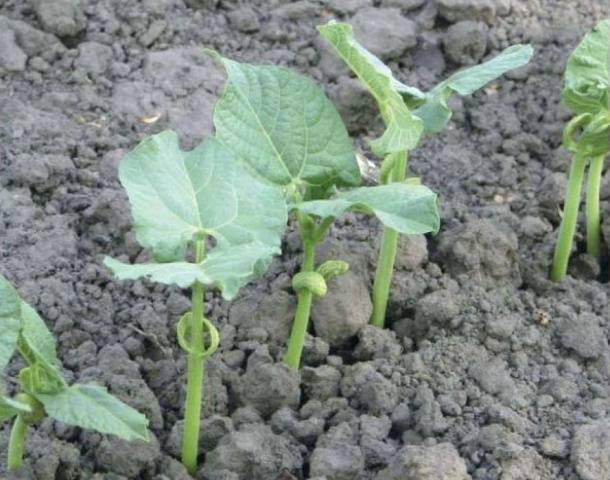Content
Bean varieties are divided into several types: bush, semi-climbing and climbing. Most often, in garden beds and farm fields you can find bush beans, the plant height of which does not exceed 60-70 cm. Such varieties are very productive, can withstand cold weather and begin to bear fruit earlier than others. However, low bushes often become prey to pests; beans are mainly threatened by slugs, which spoil not only the stems and leaves, but also the pods with fruits.
A worthy alternative to bush beans are the climbing varieties of this legume. Long vines entwining fences, wattles, gazebos and trees will become a real decoration of the garden or vegetable garden, and you can collect so much fruit from each bush that it will be enough for the whole family.
This article is about varieties of climbing edible beans, because breeders have developed many varieties of this crop, the fruits of which have no nutritional value, but only play a decorative role. While beans and pods of edible varieties have the same taste and nutritional qualities as beans collected from a low-growing bush.
Features and varieties of bush beans
Length of lashes bush varieties of beans can reach five meters.Fences are entwined with such vines, they are planted on the walls of houses, outbuildings, gazebos and pergolas. But you can limit yourself to ordinary supports with a slingshot at the end; the height of such supports should be about two meters.
The features of growing bush varieties include:
- The need to tie up plants.
- Beans love warmth, so it is sown in the ground at the end of May or beginning of June, when the threat of frost has disappeared.
- The vegetative period of legumes ranges from 60 to 90 days, depending on the variety. Climbing beans can be harvested until the autumn frosts, since the fruiting period of this crop is extended.
- Possibility of planting a climbing bush near fruit or garden trees. Such a neighborhood will not harm even young trees in any way, because the roots of beans, as is known, release nitrogen into the ground, which is necessary for most plants for normal development.
- Creating shade using legume bushes.
- Tall plants do not like drafts and wind, which can break their vines. Therefore, it is necessary to plant climbing bushes in places protected from strong winds.
Depending on the form in which beans are eaten, varieties of this crop are divided into:
- asparagus;
- semi-sugar;
- cereals.
Green beans eaten together with the pods. These varieties are also called sugar varieties. The seed capsule of these beans is soft, without hard parchment walls between the grains. Beans are harvested when they are not ripe, when the pods are still tender and soft. After full ripening, the beans inside the pod become the same as those of grain varieties, only smaller.
Semi-sugar varieties when unripe they have tender pods.But if you lose sight of the beans a little and harvest the asparagus at the wrong time, the seed pods will become as tough as those of grain varieties. In this case, the beans can be eaten just like regular beans.
Grain varieties also called shelling because the pods are shelled in order to extract mature beans from them. These beans are used boiled, and the fruits need to be cooked for a long time, at least two hours.
You can grow any of three types of beans on climbing bushes: both pods and beans grow well here. All that remains is to choose a good variety of fruit-bearing vine.
"Blauhilda"
A climbing bush of purple color: this bean surprises with purple pods, the same beans and even leaves. The bush also blooms in a dark purple color. It is better to grow “Blauhilda” in a warm climate; for central Russia it is better to choose the seedling method or plant beans in heifers. The ripening period ranges from 90 to 110 days, so the beans may simply not ripen in a short summer.
The bushes begin to bloom very quickly, their flowering continues until the autumn cold. Therefore, there are always fresh pods on the bean bushes - it bears fruit all season long.
The variety is considered asparagus, the length of the pods reaches 23 cm. When fresh, the pods are purple, but after cooking they turn green. If harvested at the wrong time, asparagus may become a little tough. In this case, you can eat the beans themselves, because they are also very tasty - large, oily, beige in color.
The basis for “Blauhilda” must be strong, because the bushes reach a length of three to four meters and have fairly powerful shoots with many fruits. This plant will be an excellent decoration for the garden and vegetable garden.
"Winner"
This variety is also called fire red bean. The bushes of this bean look very impressive: thin vines, up to four meters long, with many small bright scarlet flowers.
In Russia, this variety is found more often than others, because it is very unpretentious. The only thing that “Winner” is afraid of is frosts; even with slight frosts the plant dies.
The beans of this bean are eaten; they are colored light purple with black spots. There are several varieties of the variety, all of them bloom in different shades and have beans of different colors.
You can also eat bean pods of the Pobeditel variety. But before that, just like beans, they must be boiled. The fact is that beans contain toxins, and when cooked they are quickly neutralized.
The taste of beans is average, so most often they are grown for decorative purposes.
"Purple Lady"
This climbing bush is not very tall - its height reaches a maximum of 150 cm. The plant is decorated with large dark purple flowers. The fruits of the variety are pods, up to 15 cm long, the shape of which resembles a tube.
The variety is an early ripening variety; asparagus can be eaten already on the 55-60th day after sowing bean seeds in the soil. Beans are also eaten; they are white in color and have an excellent taste.
“Purple Lady” differs from the “Blauhilda” variety in its more graceful shoots and higher yield.
"Harmony"
The variety is considered semi-sugar - you can eat both asparagus and beans. Beans begin to bear fruit on the 65th day after planting, and fruiting continues until the first frost.
Gardeners love “Harmony” for its unpretentiousness, good germination and stable yield.The bean pods are golden in color; you can eat both them and the beans themselves, which are painted white.
300-500 grams of bean grains are collected from each bush. The weight of the lashes is quite large, so the vines need to be tied to reliable supports, because their length reaches four meters.
"Spanish White"
The beans in this variety are unique - their size is five to six times larger than the average size of beans. The variety belongs to the peeling variety and is also distinguished by the excellent taste of the fruits, which have a very delicate and thin skin.
The pods of these beans are not eaten - they are too hard. But beans can be added to borscht, lobio, canned or stewed - they have a unique, very delicate taste.
Each green pod, the length of which does not exceed 14 cm, contains only 3-5 beans. The variety does not begin to bear fruit very early - on the 70th day after sowing the seeds in the soil.
The decorative qualities of the vines are also excellent - the length of the vines is about four meters, the bushes are powerful and strong. The beans bloom with snow-white flowers, with which the bush is literally dotted.
"Berlotto"
The fiery color of the inflorescences, delicious asparagus and powerful climbing vine have made the Italian variety one of the most popular in Russia. At the beginning of the growing season, the bean pods are colored green, measure about 14 cm, and have a flattened shape. After some time, a beautiful marble pattern appears on the pods, they become variegated. Each box contains four beans. It is better to collect grains when they are not ripe, as they are more tender, boil quickly, and have a slightly nutty flavor. Once fully ripened, the white beans also develop a spotted pattern.
It is recommended to eat Berlotto as long as the grains are colored a uniform green color. Fruits can be collected 60 days after planting. Even earlier, you can eat the pods of this climbing bean - they are tasty in an unripe state, until the green color gives way to spotty.
"Vigna"
This Asian beauty is quite whimsical and capricious, but the bushes of this plant can become a decoration for any area. Beans belong to the asparagus subspecies and are characterized by very high yields.
The length of the average Vigna pod reaches one meter. Climbing bushes reach three meters in height. The plant blooms only at night; the flowers are purple in color. During the day, the flowers are closed and their color changes to yellow-brown.
From each bean bush you can collect about 200 pods. You can eat asparagus and the beans themselves, which are painted white. You can easily recognize the fruits of “Vigna” by the dark spot on the side of the bean.
"Golden Nectar"
This bean is classified as an asparagus variety; its pods reach a length of 25 cm and are colored yellow-golden. The variety is considered early ripening, the fruits ripen on the 60th day after planting.
Unripe pods and beans of Golden Nectar should be eaten before they become too hard.
"Dolichos"
In India, the fruits of this variety, which is a variety of Cowpea, are eaten and considered a delicacy. Whereas in Russia, these beans are still grown only for decorative purposes. True, some gardeners feed beans to livestock or use them as green manure.
Depending on the variety, Dolichos vines can be purple, red or green. The lashes reach four meters in height. Bean inflorescences are not only beautiful, they exude a delicate, pleasant aroma.
The pods adorn the vines until the first autumn frosts; they are colored in different shades, just like the flowers of “Dolichos” - it depends on the bean variety.
Cooking beans
It's not just beans that need special processing before eating. After all, everyone knows that beans need to be soaked in cold water for a long time, and only then cooked for 1.5-2 hours.
You also need to know how to cook asparagus pods. They cook for just a little bit – just a couple of minutes. And if asparagus is to be frozen, it must be blanched. The pods are poured with boiling water for a few seconds, abruptly replacing it with ice water. This tactic helps preserve all the nutritional properties of asparagus and “clog” beneficial vitamins and microelements.
Climbing beans can be more than just a decoration - they are a great way to get a high yield of beans or asparagus with excellent taste from a modest plot of land.


























